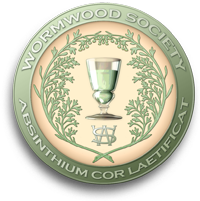
Absinthe: The Rise, Fall and Resurrection of the Green Fairy
The Myth of Absinthism
Charles Dudley Warner wrote in 1870: “Politics makes strange bedfellows.” He was writing of his alliance with Harriet Beecher Stowe in support of the abolition of slavery, but he might as well have been referring to the parallel visions of two normally opposing factions: the powerful lobbyists of the now-recovering wine industry and the growing temperance and prohibitionist movements. Absinthe, their common adversary, was doomed.
With both sides arguing that absinthe brought its own unique health hazards, a myth was born.
The myth was largely the work of Dr. Valentin Magnan. His flawed studies on the effects of absinthe would be considered bad science by today’s standards and they also received criticism from his peers at the time. The fact remains however that these were the formative work behind the assumptions and superstitions that many—including the FDA—cling to even today.
Absinthism, he claimed, was marked by hyperexcitability, epileptiform convulsions, hallucinations and addiction:
“In absinthism, the hallucinating delirium is most active, most terrifying, sometimes provoking reactions of an extremely violent and dangerous nature. Another more grave syndrome accompanies this: all of a sudden the absinthist cries out, pales, loses consciousness and falls; the features contract, the jaws clench, the pupils dilate, the eyes roll up, the limbs stiffen, a jet of urine escapes, gas and waste material are brusquely expulsed. In just a few seconds the face becomes contorted, the limbs twitch, the eyes are strongly convulsed, the jaws gnash and the tongue projected between the teeth is badly gnawed; a bloody saliva covers the lip, the face grows red, becomes purplish, swollen; the eyes are bulging, tearful, the respiration is loud, then the movements cease, the whole body relaxes, the sphincter releases, the evacuations soil the sick man. Suddenly he lifts his head and casts his eyes around him with a look of bewilderment. Coming to himself after awhile, he doesn’t remember one thing that has happened.”
That will get your attention.
In order to reproduce the symptoms observed in “absinthists” in laboratory animals, Dr. Magnan used pure wormwood oil extract in his experiments, not commercially made, finished absinthe, which contains only a small amount of the herbal oils. This can be compared to doing a study on the effects of daily coffee drinking by feeding animals gargantuan doses of pure caffeine, the equivalent of 200 cups daily.
The British medical journal, The Lancet, published a number of articles about absinthe throughout the Belle Époque. In 1868:
“WE think it time that an authoritative and exhaustive inquiry should be made as to the effects of excessive absinthe drinking, about which a great deal is being said just now, not merely by medical men, but by the public. It is quite clear that a great deal of what has been said is mere nonsense, and will not bear a moment’s investigation. And when one reads carefully even the seemingly authoritative description of the symptoms given by M. Legrand … it is impossible to fix on any definite peculiarities which clearly distinguish poisoning with absinthe from poisoning with any other concentrated alcohol, taken in small doses repeated with extreme frequency…
For our own part, we have never been convinced that there is anything in the symptoms of acute or chronic absinthism as they are described, essentially different from those of acute or chronic alcoholism which has been produced by the imbibition of innumerable drams of any spirit.
“We have repeatedly seen the whole train of symptoms, which are now so much talked of, produced by the constant drinking of brandy or rum. As for hallucinations, there is nothing more common. At any rate, it will take a good deal of very solid and precise evidence to convince us that the trifling amount of essence of wormwood contained in the liquor called absinthe, adds any considerable poisonous power to the natural influence of some 20 or 30 ounces per diem of a highly concentrated alcohol,
And again in 1869:
“The question whether absinthe exerts any special action other than that of alcohol in general, has been revived by some experiments by MM. Magnan and Bouchereau in France. These gentlemen placed a guinea-pig under a glass case with a saucer full of essence of wormwood (which is one of the flavouring matters of absinthe) by his side. Another guinea-pig was similarly shut up with a saucer full of pure alcohol. A cat and a rabbit were respectively enclosed along with a saucer each full of wormwood. The three animals which inhaled the vapours of wormwood experienced, first, excitement, and then epileptiform convulsions. The guinea-pig which merely breathed the fumes of alcohol, first became lively, then simply drunk. Upon these facts it is sought to establish the conclusion that the effects of excessive absinthe drinking are seriously different from those of ordinary alcoholic intemperance.”
